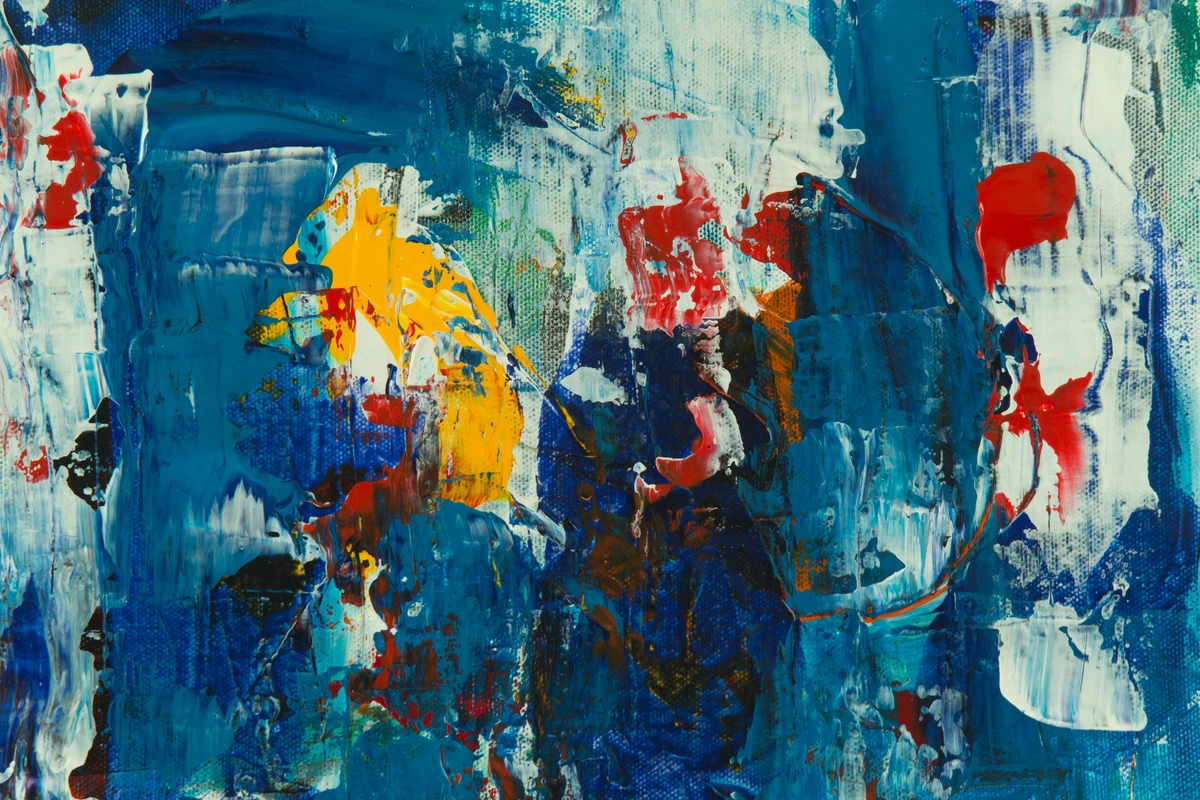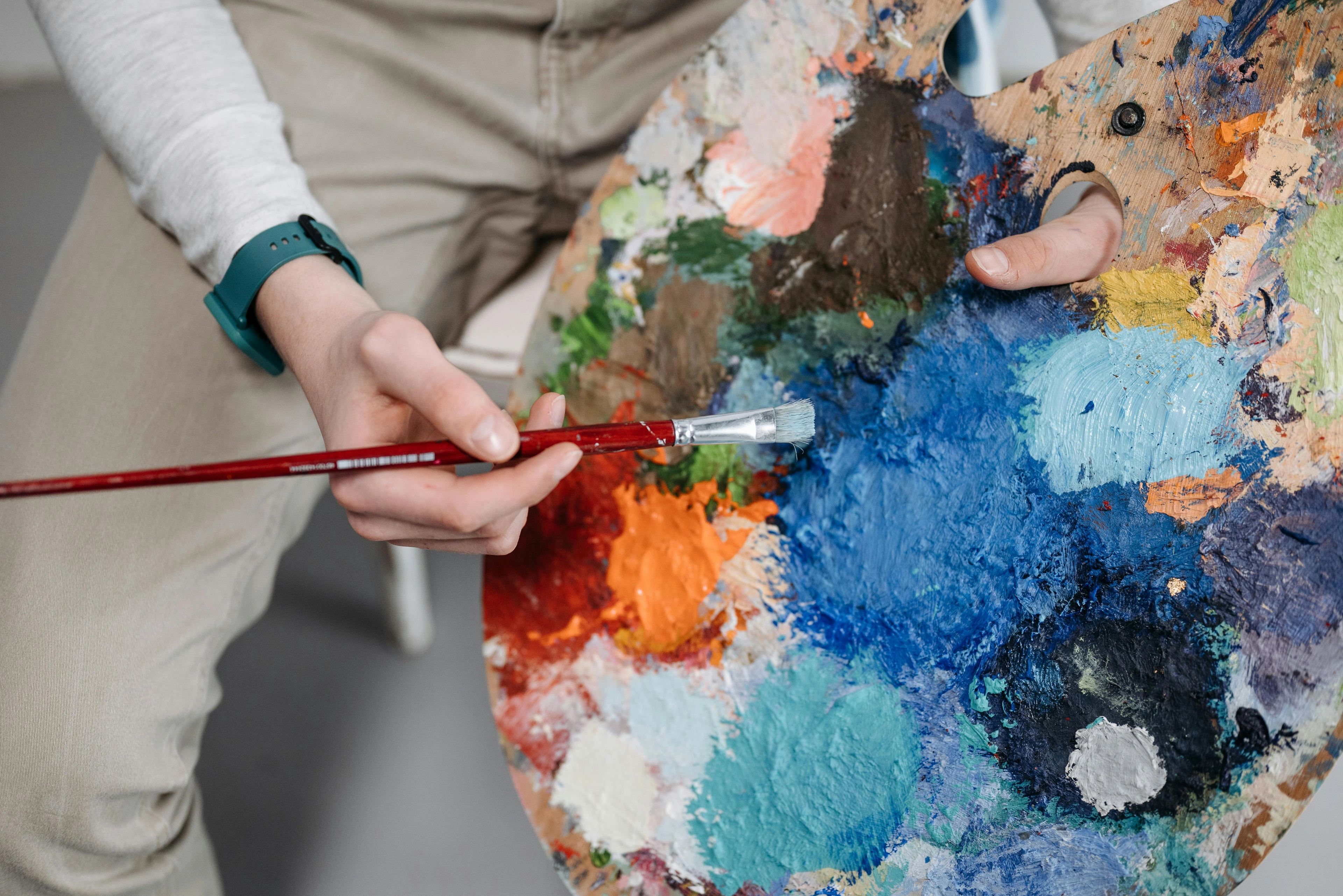
Mijn Paletmes, Mijn Stem: Textuur en Emotie Ontketenen in de Kunst – Een Persoonlijke Gids voor Abstracte Kunstenaarschap
Unlock your unique artistic voice with the palette knife. This personal guide explores creating profound texture, conveying emotion, and mastering techniques from impasto to sgraffito, finding your authentic mark in abstract art.
My Palette Knife, My Voice: A Personal Guide to Unleashing Texture and Emotion
I think my love affair with the palette knife began out of pure frustration. Brushes felt… polite. Too articulate. I wanted to yell, to scrape, to build something visceral and undeniably me, and the brush just wanted to have a civilized conversation. It was like trying to sculpt a mountain with a feather. The palette knife, this simple wedge of metal and wood, didn't care about politeness. It let me get my hands dirty and just move paint with an almost primal force. It became less of a tool and more of an extension of my own voice, especially the parts that don't use words. It's a journey that unlocks honest expression. My goal with this guide is to be your go-to companion for anyone eager to explore this dynamic medium, covering everything from historical context to practical techniques and overcoming common challenges.
This isn't going to be a stuffy, academic guide. Think of it more as me sharing my diary pages—the messy, paint-smeared ones, filled with insights gained through countless hours of experimentation. We'll delve into why this tool is so magical, some of my favorite ways to use it to create texture that speaks volumes, and most importantly, how to use it to translate the chaos and beauty of your inner world onto the canvas. It's about finding your raw, authentic mark.
Why the Palette Knife? A Love Letter to a Piece of Metal
Let's be honest, a brush is what you're supposed to use, right? It’s the quintessential artist's tool, steeped in centuries of tradition. But for me, breaking up with the brush (we still see each other sometimes, it's complicated, we have a co-parenting agreement with acrylics) was truly liberating. It felt like stepping out of a formal suit and into paint-splattered overalls. The brush whispers; the knife roars, or maybe sometimes, it just grumbles beautifully.
The Joy of Imperfection & Raw Expression: A knife is clumsy in the best possible way. It resists fussy details, forcing you to think in shapes, planes, and pure energy instead of perfect lines. This resistance is where the magic happens; it introduces an element of chance, a "happy accident" that often turns out to be the most honest and compelling part of the painting. It’s a constant lesson in letting go of control, something I suspect we could all use a bit more of in art and in life. I remember one piece where I was meticulously trying to recreate a wave, and the paint just slipped and smeared into something unexpected. For a moment, I panicked, but then I leaned into it, and that accidental swirl became the most powerful part of the painting, a testament to raw, untamed motion. It's about accepting the beauty in the unrefined.
A Physical Dialogue with Paint: Sculpting Emotion: Using a palette knife is a full-body experience. It's the satisfying scrape as you drag it across the canvas, the thick, buttery spread of a dollop of paint, the sharp chop to create a hard edge. It's less like painting and more like sculpting. You're not just applying color; you're building form, creating history in layers, and engaging in a physical dialogue with your materials. The very sound of the knife on the canvas—that soft, scraping whisper, or the bolder, satisfying thud as it lays down a thick glob—becomes part of the creative symphony. This directness is where the emotion gets baked right in. Every ridge and valley is a trace of your gesture, your feeling in that moment.
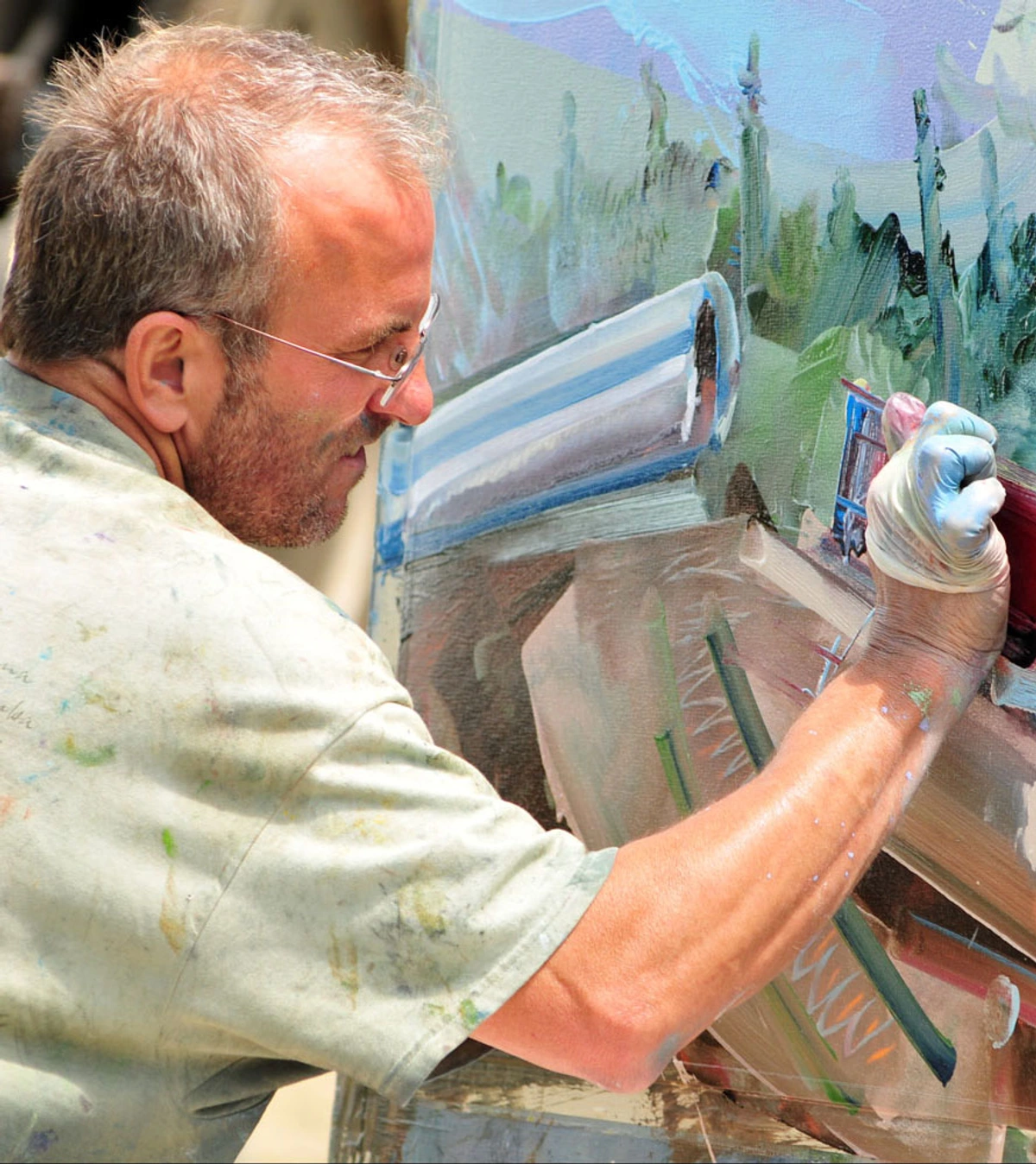
Unrivaled Versatility: While renowned for thick, textured applications, the palette knife's true genius lies in its range. It can spread vast areas of color with buttery smoothness, scrape back layers to reveal hidden depths, or even create incredibly sharp, precise lines that belie its blunt appearance. It's a tool that readily adapts to your every artistic whim. I was surprised myself one day when I accidentally used the very tip of a stiff knife to scratch in a fine line for a distant horizon. It worked perfectly, and now it's one of my favorite little tricks. With a light touch, you can achieve thin, almost transparent glazes, create subtle color transitions, or even soft scumbling effects that mimic fine brushwork but with a distinct, organic feel.
The palette knife's journey from a humble mixing tool to a celebrated instrument of expression has a fascinating history. Though initially used to blend pigments on a palette, artists began pushing its boundaries in the 19th century. Early Realists like Gustave Courbet used it to build solid, textured forms. Impressionists, too, like Monet, sometimes employed it for broader, less defined strokes, or even to mix colors directly on the canvas, fostering a sense of immediacy and vibrant, broken color. Most notably, Post-Impressionists like Van Gogh famously used it to create his signature swirling, textured impasto. Later, Abstract Expressionists like Frankenthaler or Diebenkorn embraced its raw immediacy, making it a key tool for conveying emotion and energy directly onto the canvas, sometimes even using the knife to block in large fields of color with striking edges. It's a testament to how an artist's needs can redefine a tool's purpose.
Getting Started: Your First Date with the Knife
Ditching the brush can feel a bit intimidating, like trying to write with your non-dominant hand, but I promise it's easier and far more liberating than it looks. The key is to just play, without judgment. Think of it as a first, slightly awkward, but potentially transformative date. I still remember my very first attempt – it was less 'painting' and more 'spreading peanut butter on a canvas.' Utterly messy, a little frustrating, but that first thick glob of paint, imperfect as it was, held a strange promise.

- Choose Your Weapon Wisely: There are dozens of shapes and sizes, and you'll accumulate favorites over time, each with its own personality (and battle scars!). For starters, I recommend a classic trowel-shaped knife with a bit of flex. It’s a fantastic all-rounder for scooping, spreading, and building texture. Beyond that, consider the material: steel knives offer excellent durability and a crisp edge, while plastic knives can be more flexible and safer for beginners, though they may lack the same responsiveness. Consider:
- Diamond-shaped: Great for sharp edges and precise placement.
- Fan-shaped: Excellent for subtle blending or feathering.
- Pointed or Angled: Useful for fine lines or intricate details, surprising for a knife! And remember, keeping your trusty steed in fighting shape is key. Always wipe your knife clean while the paint is still wet, and avoid bending the blade unnecessarily. A well-maintained knife is a happy knife.
- Embrace Thick Paint: This is crucial for the signature textural effects. Heavy body acrylics or oils are your best friends here. Acrylics dry faster, allowing for quicker layering and distinct, sharp textures, though this can make blending more challenging. Oils offer longer working times for blending, subtle transitions, and manipulation directly on the canvas. Look for 'heavy body' or 'impasto' specific paints; their higher pigment concentration and thicker consistency are essential for building those delicious, tangible ridges and valleys. Fluid paints can be used, but they lend themselves more to scraping and spreading effects rather than sculptural impasto. Generally, higher viscosity paints will allow for more dramatic peaks and valleys, while lower viscosity options work better for thin glazes or scraping effects that reveal the canvas texture.
- Just Make a Mark (and Don't Be Shy!): Squeeze out some paint. Scoop it up with your chosen knife. And just… smear it on a canvas or a thick piece of paper. Don't overthink it. Press hard. Press lightly. Use the edge. Use the flat side. Scrape it off again. Don't try to make a painting; just get a feel for the conversation, the resistance, the glide. This initial experimentation is vital for developing your unique artistic style.
- Prepare Your Workspace: While embracing mess is part of the charm, a little preparation goes a long way. Lay down a drop cloth or old newspapers to protect your surfaces. Keep a rag or paper towels handy for quick wipes—it's much easier to clean paint when it's wet!
- Choosing Your Surface: Your choice of surface profoundly impacts the outcome. Canvases with a noticeable tooth (texture) provide grip for the paint, allowing you to build thick layers without the paint sliding off. Wood panels or thick, primed paper can also offer a firm, stable base, perfect for aggressive scraping or intricate impasto work.
- Mastering Pressure and Angle: The magic of the palette knife isn't just in the paint; it's in how you move it. Holding the knife almost flat to the canvas and dragging it lightly creates smooth, thin layers, while increasing the angle and pressure will yield thicker, more pronounced textures and sharper lines. Experiment with varying degrees of pressure—from barely touching the surface to pressing down firmly—and different angles to discover the vast range of marks you can achieve. It's a subtle dance between your hand and the canvas.
- Leveraging the Knife's Edges and Corners: Don't just use the flat of the blade! The very edge of a palette knife, especially a pointed or angled one, can create surprisingly fine lines, sharp divisions, or even intricate details that might typically be associated with a brush. The corners are excellent for small dabs of color, subtle texture, or working in tight spaces. Exploring these less obvious uses unlocks incredible versatility and allows for a broader range of expressive marks, from delicate scratches to bold, precise strokes.
Techniques for Texture & Emotion: The Vocabulary of the Knife
Once you're comfortable with the basic interaction, you can start learning the language. These are a few of my go-to "words" for telling a story with texture, transforming flat surfaces into dynamic landscapes of feeling. For a deeper dive into how texture plays a vital role, explore the role of texture in abstract art: a sensory exploration.
Building Mountains: The Glorious Impasto
Impasto is just a fancy word for applying paint so thickly that it stands out from the surface, creating a 3D effect. This is the palette knife's superpower, its roar. Every ridge and valley you create catches the light in a unique way, making the painting feel alive and changing as the light in the room shifts throughout the day. It’s a way to make emotion tangible. A thick, jagged swipe can scream anger or raw energy, while a soft, pillowy application can feel like a moment of peace, a quiet breath. If you want to dive deeper into this, I've written more about what impasto painting is and its powerful effect. It's like sculpting light with color.
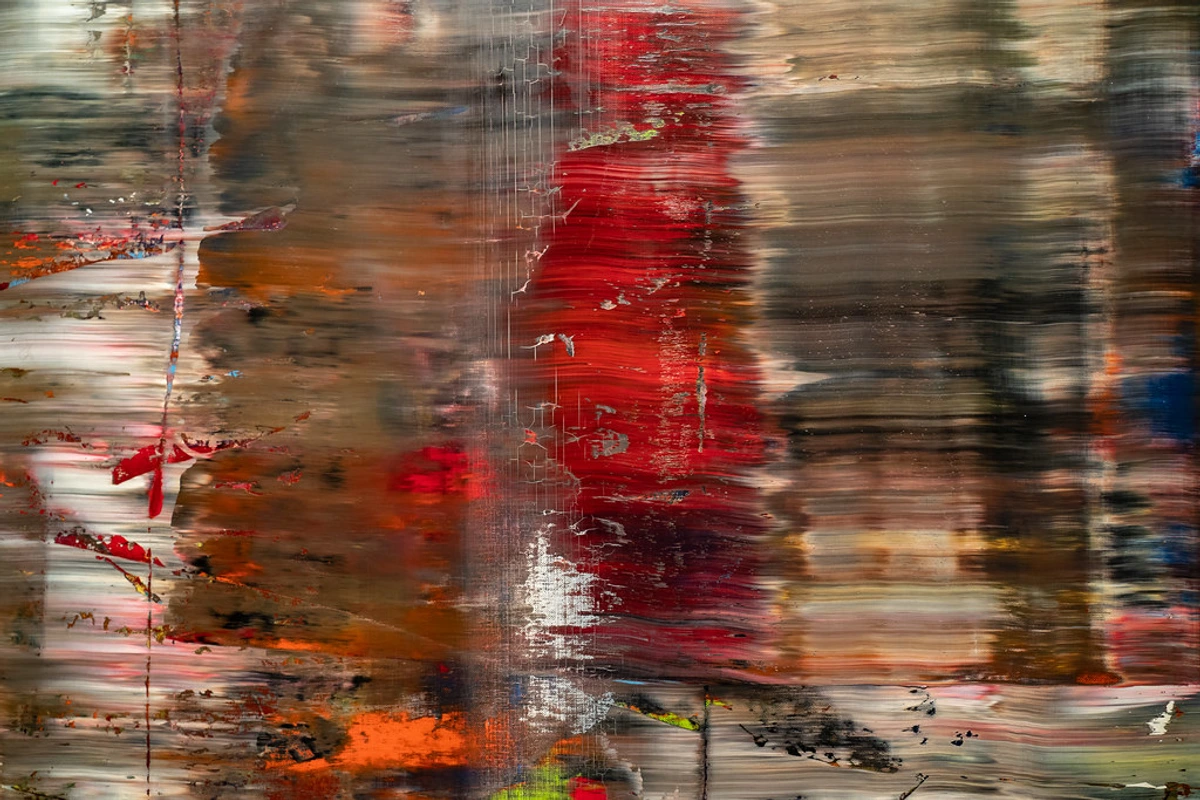
Scraping Back: The Art of Revelation
This is one of my absolute favorite things to do; it feels like an archaeological dig into the soul of the painting. You lay down a layer of color, let it get a little tacky (meaning it's slightly dry but still pliable enough to move, like soft butter), then lay another color on top. Then, with the edge of your knife, you scrape back into the top layer, revealing glimpses of the color beneath. Each scrape tells a story of what came before, creating a sense of history, depth, and complexity. It’s a beautiful metaphor for how our past experiences peek through our present selves, how layers of our lives are exposed. This technique is central to the language of layers and building depth in abstract acrylics. Every revealed line whispers a secret.
Sgraffito: The Whispers Beneath the Surface
Beyond scraping back layers to reveal what came before, sgraffito is a specific technique of scratching into wet paint to reveal the underlying surface or a different color layer beneath. It's like leaving a secret message, a subtle etching that adds linear detail and texture. I often use a fine-tipped knife or even the very corner of a regular knife for this. It's fantastic for delicate lines, textures that mimic wood grain, or just little whispers of definition in an otherwise bold painting. It creates an almost ancient, excavated feel, like something being rediscovered. It's where hidden narratives come to light.
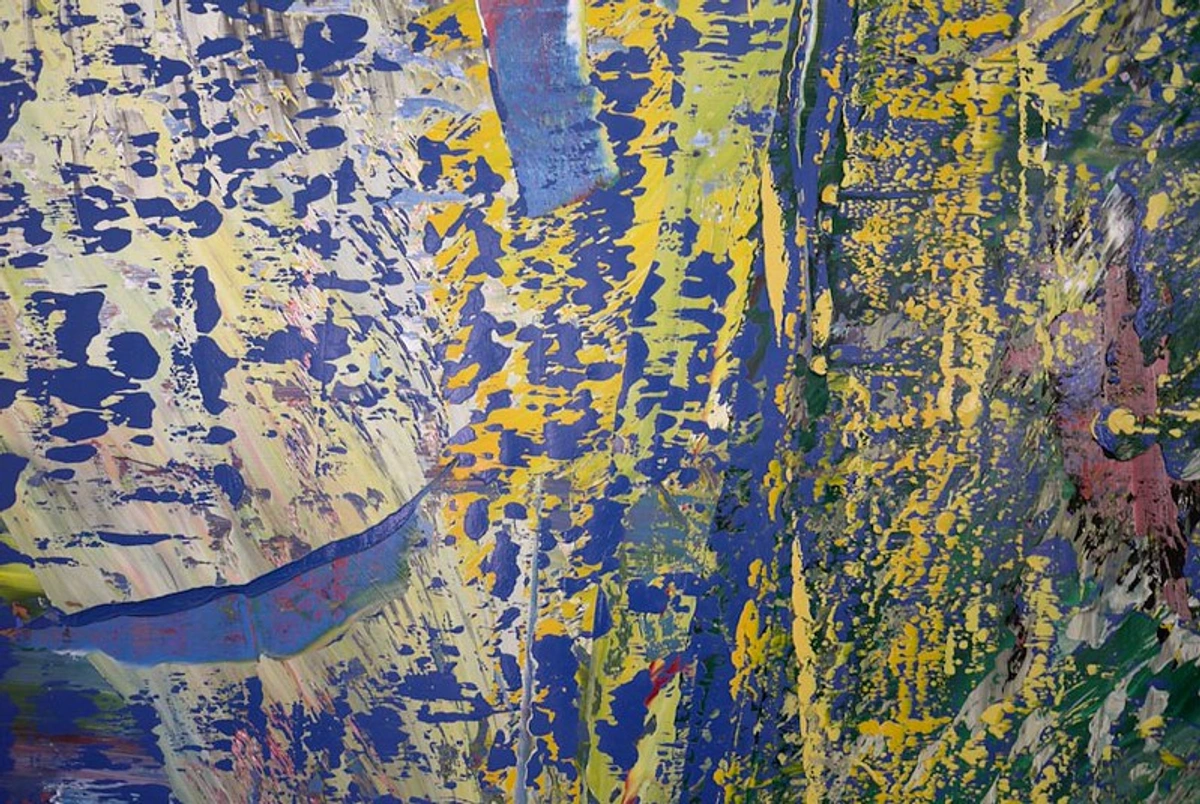
The Broken Edge: Finding Energy in the Gaps
Instead of a smooth, continuous stroke, try loading your knife with paint and dragging it lightly and quickly across the canvas. It will skip and stutter across the weave of the canvas, creating a broken, staccato texture. This technique is pure energy—the quick, sharp intakes of breath, or the frantic pulse of discovery. It can feel like static, a racing heartbeat, or the vibrant buzz of a city. It’s often gloriously uncontrolled and absolutely perfect for conveying a sense of urgency, excitement, or even anxiety. For more on this, I've explored similar ideas in my guide to exploring texture in abstract painting. It's a spontaneous burst of movement.
Mixing on the Canvas: The Dance of Discovery
Unlike traditional palette mixing, where colors are pre-blended and often homogenised, mixing directly on the canvas with a palette knife allows for beautiful, unpredicted interactions. You apply two or more colors side-by-side or in layers, then gently blend or swirl them together with the knife, leaving subtle transitions and visible streaks of individual hues. For a soft, ethereal transition, use a light touch and gentle swirls. For more vibrant, broken color effects, apply more pressure and use vigorous, chopping motions. This technique creates a dynamic, lively surface where colors aren't just mixed, but rather dance and interact, reflecting spontaneity and the unfolding creative process. It's painting as a living, breathing experiment.
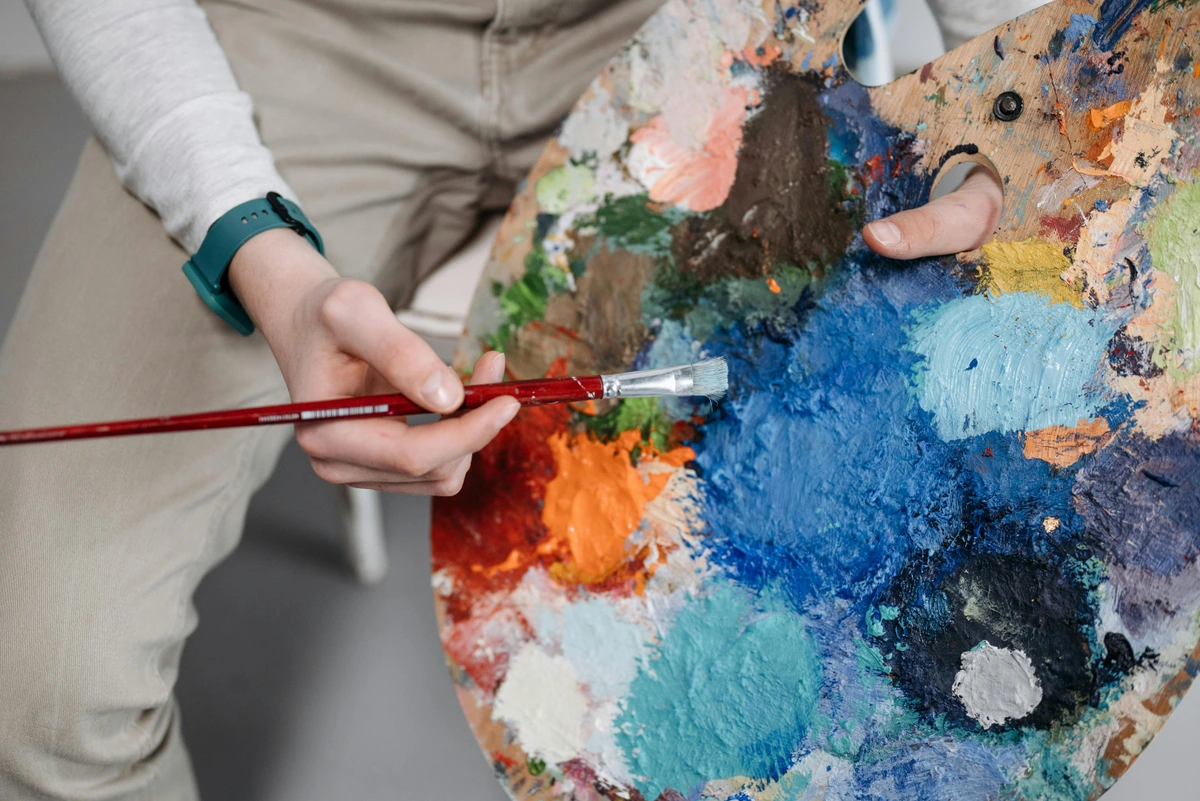
Color Blocking / Laying Down Broad Fields: Bold Foundations
While the palette knife excels at intricate textures, it's also incredibly effective for creating large, uninterrupted fields of color, especially in abstract painting. By loading the flat of the knife with a generous amount of paint and dragging it across the surface with even pressure, you can lay down expansive, uniform layers. This technique is perfect for establishing strong compositional foundations, creating distinct areas of color, or building a sense of solidity and depth. The subtle imperfections and edges left by the knife lend an organic, handmade quality that a brush might not achieve, making even a 'flat' area feel dynamic. It's a bold stroke that sets the stage for everything else.
Common Challenges & How I Overcame Them
While the possibilities are exciting, like any artistic journey, there are bound to be a few bumps along the road. Here are a few common stumbling blocks I've encountered and how I learned to navigate them.
- Paint Not Sticking? This usually happens with too thin paint or a canvas that's too smooth. The solution? Embrace heavy body paints and don't be afraid to load up your knife. Also, a canvas with a bit of tooth (texture) will give the paint something to grab onto. I used to be so frustrated, thinking I was doing something wrong, until I realized my paint was basically water and my canvas was as slick as ice.
- Feeling Unwieldy or Clumsy? It's a different muscle memory than a brush. Practice holding the knife at different angles—almost flat to the canvas for spreading, more upright for scraping. The key is consistent experimentation. Don't aim for perfection; aim for exploration. It felt like trying to eat soup with a fork at first, but with persistence, you learn how to make it work.
- Using Too Much Paint? In a word, yes, it often feels like you're using a lot! But I've learned to see it as an investment in expression. You're not just buying color; you're buying texture, depth, and raw emotion. The results, for me, are so worth it. And remember, you can always scrape off excess paint and reuse it on your palette.
- Overworking the Paint? It's easy to get lost in the act of pushing and pulling, but sometimes less is truly more. If you find your colors turning muddy or losing their vibrancy, it's often a sign of overworking. Try stepping away for 15-30 minutes, or even a full day if it's oil paint. When you return with fresh eyes, you'll often know exactly what (if anything) needs to be done. A painting isn't meant to be perfectly neat; it's a record of the journey. I once spent an hour trying to 'fix' a perfectly good sky, only to end up with a greyish-brown blob. Lesson learned: sometimes the best move is to put the knife down.
- Acrylics Drying Too Quickly? This is a common nemesis for acrylic knife painters. The fast drying time can make blending or continuous texture difficult. My go-to solutions are using an acrylic retarder medium (which slows drying time) or working in smaller, more manageable sections. Or, lean into the quick-dry! It forces you to be decisive and embrace distinct, sharp layers, which can be a beautiful effect in itself.
- Physicality and Ergonomics: Using a palette knife is physically engaging, which is part of its appeal, but it can also be demanding on your hands and wrists, especially during long sessions. Remember to take breaks, stretch your hands, and pay attention to your posture. Experiment with different ways of holding the knife to find what's comfortable; it's less about a 'right' way and more about finding your way to apply pressure and movement without strain. Your body is also part of the creative process.
Finding Your Own Voice
Here's the secret: none of those techniques truly matter if they don't feel like you. The real magic happens when you stop thinking about "how" and start painting "what" – what's stirring within you. The palette knife, in its glorious bluntness, forces you to simplify, to distill emotion into pure form and texture. It was a revelation for me to realize that the tool wasn't guiding me; it was simply amplifying what was already there. I remember one piece where I was struggling, feeling disconnected from the canvas. I put on some loud music, just started wildly scraping and pushing, not thinking, just feeling. What emerged wasn't what I'd planned, but it was raw, powerful, and undeniably me. It was a moment where the knife truly became my seismograph, recording every turbulent emotional tremor I felt, translating my unique internal rhythm into marks on a canvas. That day, it picked up a particularly strong tremor, resulting in a series of sharp, overlapping angles that perfectly captured my inner conflict.
Connect your movements to your mood. If you’re feeling bold, make big, sweeping gestures. If you’re feeling contemplative, make small, considered marks. Let the knife be a seismograph for your emotions, registering every tremor and surge. The journey to finding your abstract voice is a messy, beautiful process of trial and error. It's about translating your unique internal rhythm into marks on a canvas. It certainly was for me, as you can see in the evolution of my artistic style over the years, a path littered with countless experiments and discoveries, much like the process itself. It's the moment when the frustration that started it all transforms into pure, unadulterated joy.
FAQ: Quick Answers
How do I clean a palette knife? Honestly, the best way is to just wipe it with a paper towel or rag while the paint is still wet. If you're like me and occasionally forget (or embrace the paint buildup as 'patina'), dried acrylic can be scraped off with another knife or a stiff brush, and dried oil paint will require some solvent. Or you can just let the old paint build up. It adds character, like battle scars on a trusty companion.
Is it more expensive to paint this way because you use so much paint? Yes, generally, but think of it as an investment in richness and depth. The tactile quality and vibrancy you achieve often justify the extra paint. It’s a bit like baking with extra butter – you taste the richness.
What's the best paint type for beginners with a palette knife, and how can I achieve both smooth and textured effects? For beginners, heavy body acrylics are often a good starting point due to their faster drying time, which allows for quicker layering and immediate textural results, though they require quicker blending. Oils offer more working time for blending but can be slower to master. To achieve smooth effects with either, use a flexible knife, a light touch, and a flatter angle to the canvas. For textured effects, use a stiffer knife, apply more pressure, and experiment with sharper angles, lifting the knife to create peaks and valleys. Experimentation with both paint viscosity and knife technique is key.
Is there a significant learning curve when switching between oil and acrylic with a palette knife? While the general principles of knife application apply to both, there's a subtle learning curve. Acrylics dry much faster, requiring quicker decisions and often leading to distinct, sharp layers. Oils, with their extended drying time, allow for more blending, reworking, and subtle transitions directly on the canvas. Embrace the unique properties of each medium and let them inform your technique rather than resisting them.
When should I use a stiff knife versus a flexible one? A stiffer knife is excellent for creating sharp, defined edges, for robust impasto work where you want paint to stand up dramatically, and for scraping back layers with more force. A flexible knife, on the other hand, is superb for smoother blending, soft impasto, delicate washes, or applying paint with a light, almost ethereal touch. Experimentation is key to discovering which feels right for your desired effect.
Your Turn to Speak
The palette knife isn't just for mixing colors on a palette; it's a powerful tool for expression, a direct line from your heart to the canvas. It taught me to be braver, messier, and more honest in my work, shedding the polite restraints I didn't even know I was carrying. It's truly a pathway to how to abstract art that feels authentic to you.
So, I invite you to pick one up. Forget the rules, forget the pressure, and just make some noise, some glorious, textured noise. See what your voice sounds like when it’s made of pure texture and color. And if you're curious to see how these textures come to life in finished works, you can explore some of my creations available for your home, or learn more about my journey as an artist by exploring my timeline. You can also visit my museum in 's-Hertogenbosch to experience the textures in person.
